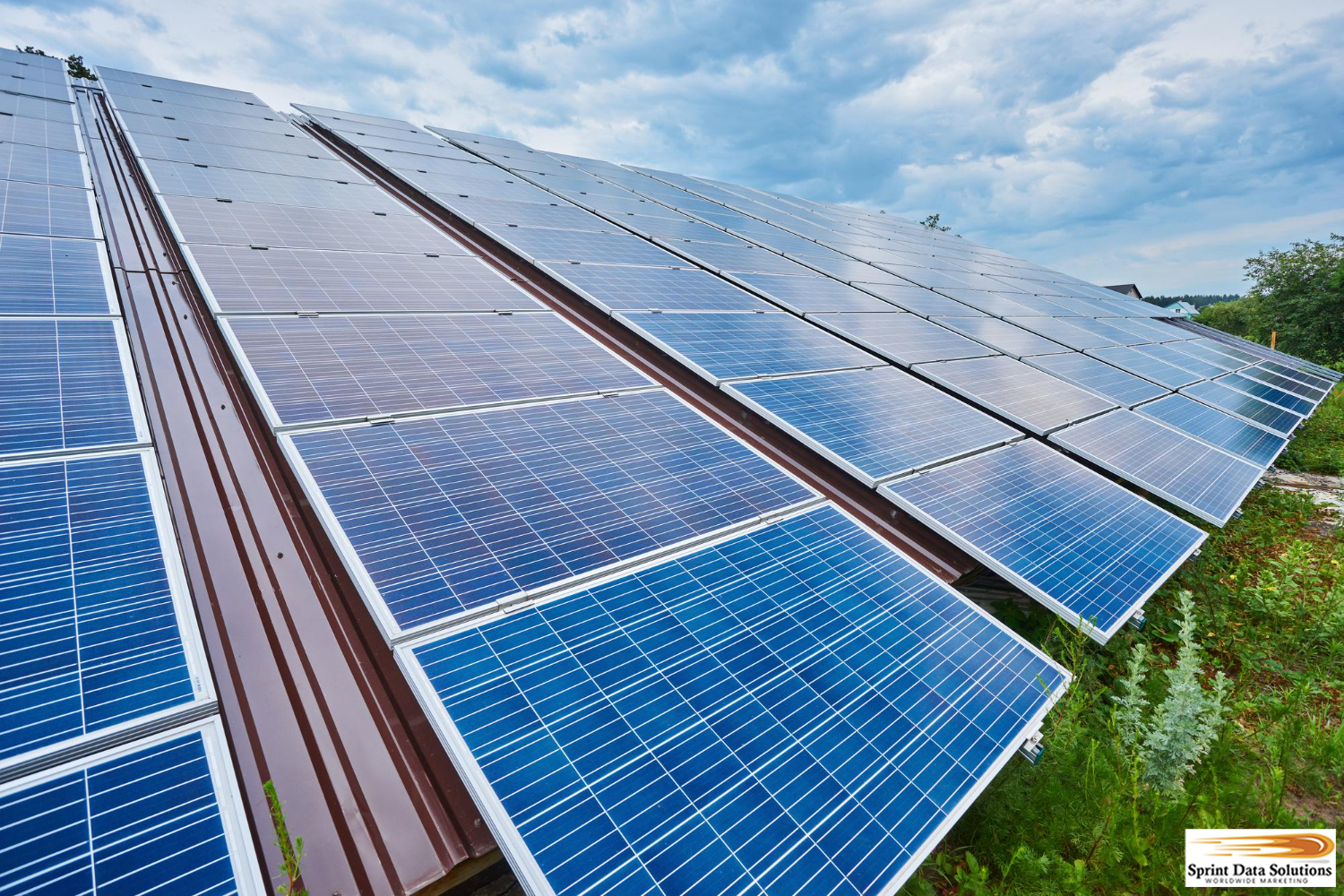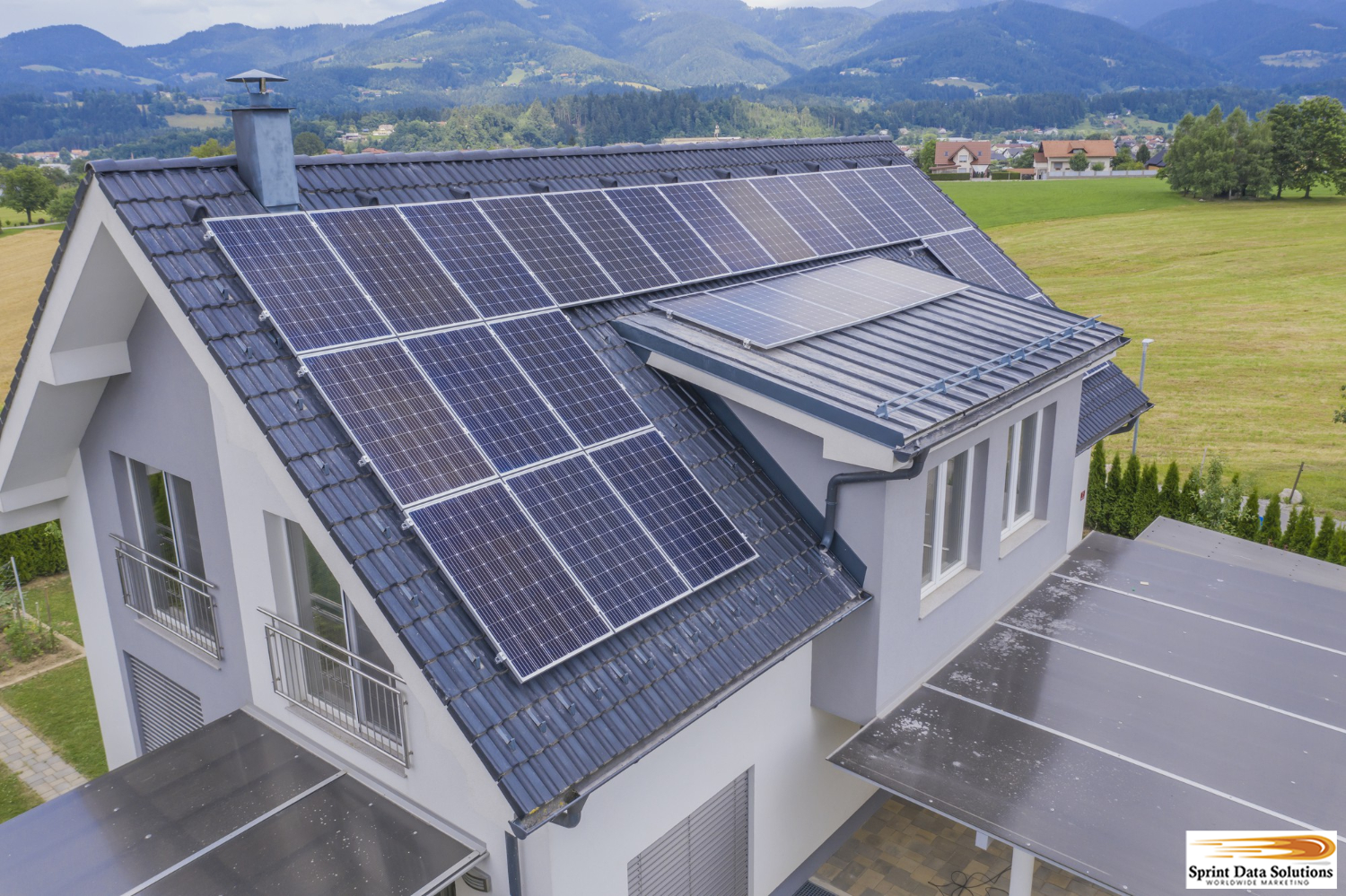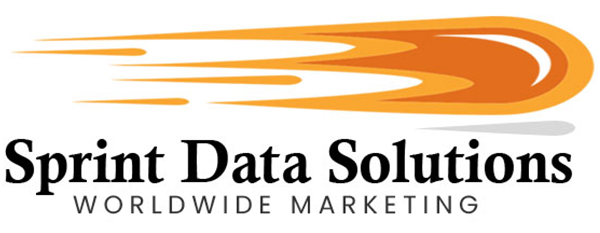Solar Power Is Generating More Leads Than Ever Before
Energy plays a fundamental role in sustaining the modern American lifestyle. Without a reliable source of energy—particularly electricity—everyday conveniences and essential services would come to a halt. From lighting homes and powering refrigerators to recharging mobile devices and operating electric vehicles, electricity underpins nearly every aspect of modern living. Its importance transcends convenience; it is a critical infrastructure that supports both personal comfort and economic productivity. In fact, electricity is classified as a utility rather than a luxury precisely because of its integral role in society. The very functioning of contemporary businesses relies on a consistent power supply—computers, phones, servers, and manufacturing equipment all depend on it. The stakes are even higher in critical sectors such as healthcare, where hospitals depend on uninterrupted electricity to power life-saving devices, maintain sterile environments, and store sensitive medications. In this way, electricity is deeply woven into the fabric of daily American life and well-being.
This indispensable role of electricity is a key reason why the United States has developed a highly diversified energy generation landscape. Historically, the country began with coal-fired power plants during the industrial revolution, which provided a robust if environmentally taxing, foundation for electrification. Later, engineers harnessed the kinetic energy of flowing water to create hydroelectric power, a cleaner and renewable option that became especially prominent in regions rich in river systems. The mid-20th century ushered in a new era with nuclear energy, promising high output with relatively low carbon emissions. Nuclear reactors became a backbone for many parts of the country, despite concerns about waste and safety.
In recent decades, however, the evolution of energy sources has accelerated, driven by technological innovation, environmental awareness, and policy shifts. Today, the U.S. power grid is more dynamic than ever before. Wind turbines spin across the plains and coastal areas, while vast arrays of solar panels soak up the sun in deserts and on rooftops nationwide. These renewable sources are increasingly cost-competitive and widely adopted, helping to reduce dependency on fossil fuels and lower greenhouse gas emissions. Meanwhile, researchers continue to explore advanced technologies such as geothermal energy and the long-pursued dream of nuclear fusion—a potential game-changer that could provide limitless, clean energy if successfully harnessed.
Electricity generation, in all its varied forms, remains not only a cornerstone of American industry but also a testament to the country’s commitment to innovation and resilience. As the demand for energy grows alongside the digital and ecological transformations of society, the ongoing expansion and diversification of power sources will remain a crucial priority for ensuring sustainability, security, and prosperity.

Coming Into Its Own
Solar power, as both a scientific principle and an evolving technology, has been around for decades. Since the late 20th century, humans have harnessed the photoelectric effect to convert sunlight into electricity, albeit initially at modest levels of efficiency. Back in the 1980s, early photovoltaic (PV) cells were already capable of powering small, low-energy devices like digital watches and calculators. However, scaling up to generate substantial electricity for residential, commercial, or industrial use was an immense challenge. Early solar farms required vast tracts of land to install sprawling arrays of panels. In some pioneering projects, sophisticated tracking systems and heliostats—motorized mirrors that follow the sun—were employed to concentrate light and increase output. These systems were typically relegated to expansive, sun-rich locations like the Mojave Desert in California, where land was plentiful and solar irradiance was high.
Fast forward to today, and the landscape of solar energy has transformed dramatically. Innovations in materials science and engineering have resulted in solar cells with far greater efficiency—modern panels can convert 20% or more of incoming sunlight into usable electricity, compared to the 5-10% of their predecessors. This leap in efficiency has shrunk the space needed for effective solar generation. Rooftop installations on average homes are now sufficient not only to meet daily household electrical needs but often to produce excess power. This surplus can be fed back into the electrical grid, a process known as net metering. Many regions incentivize such contributions, allowing homeowners to receive credits on their energy bills or even earn revenue, depending on local utility policies. Moreover, energy storage technologies, like lithium-ion batteries, have become more affordable and accessible, enabling users to store solar energy for use during nighttime or cloudy days, thereby increasing energy independence and reliability.
As a means of generating “free” electricity once installed, solar power has come a long way, and there is more interest in it for several reasons.
A Stable Alternative
One of the most compelling advantages of solar power over other forms of electricity generation is the unmatched stability it offers to users. Unlike some renewable systems such as wind turbines, which rely on sufficient and consistent wind conditions to operate effectively, solar panels have a much broader operational window. Even on overcast or rainy days, modern photovoltaic systems are still able to generate electricity—albeit at reduced efficiency—thanks to advanced technologies like monocrystalline panels and bifacial solar cells that can capture ambient and reflected light. This resilience makes solar power a far more dependable energy source in a variety of climates and weather patterns, reducing downtime and ensuring a more predictable energy yield throughout the year.
In addition to operational reliability, solar energy also provides exceptional economic stability. By installing solar panels, homeowners and businesses can significantly diminish their dependency on the conventional power grid, sometimes becoming entirely self-sufficient. In many cases, these systems are integrated with net metering programs that allow users to feed excess energy back into the grid, earning credits or compensation. This energy independence is increasingly valuable in a world where energy prices for fossil fuels like oil and natural gas are subject to volatile fluctuations caused by geopolitical tensions, supply chain disruptions, tariffs, and speculative trading. By harnessing the sun—an abundant, free resource—property owners can insulate themselves from these uncertainties and enjoy more predictable and often lower energy bills.
Moreover, solar power offers a critical advantage in the form of energy autonomy. In the event of a grid failure, properties equipped with solar systems—especially those paired with battery storage solutions—can maintain full electrical functionality. This ensures continued operation of essential systems such as lighting, heating, cooling, refrigeration, and communication infrastructure. Unlike traditional backup generators, which require fuel and regular maintenance, solar panels provide a clean, low-maintenance solution to power resilience. For households and businesses in disaster-prone or remote areas, this can mean uninterrupted operations and improved safety during emergencies. As a result, solar energy isn’t just an environmentally conscious choice—it’s a strategic investment in long-term security and reliability.
It’s Not Just Homes
While solar panels have become a popular choice for many private homeowners seeking energy independence and sustainability, businesses stand to gain even more from this powerful upgrade. Commercial and industrial entities consume significantly more electricity, making the financial returns on solar energy systems even more impactful. Beyond reducing operational costs, solar installations can stabilize energy expenses over time, hedge against utility rate increases, and demonstrate a company’s commitment to environmental responsibility. This not only enhances brand reputation but can also attract eco-conscious customers and investors. Industries ranging from manufacturing and agriculture to hospitality and retail can all leverage solar power to enhance their bottom line while contributing to a greener future.
Manufacturing
Manufacturing businesses are exceptionally well-suited to capitalize on the benefits of solar energy for two key reasons. First, they typically occupy vast facilities with expansive roof space, much of which remains unused. This makes them prime candidates for large-scale solar panel installations, allowing them to harness significant amounts of sunlight without requiring additional land. Second, manufacturing processes are inherently energy-intensive, consuming large volumes of electricity to power machinery, lighting, and HVAC systems. By installing solar panels, these facilities can offset a substantial portion of their energy needs. While the upfront investment may seem high, the long-term financial gains are substantial. Solar power drastically reduces dependency on the local utility grid, leading to immediate savings on electricity costs. Moreover, this shift enhances financial predictability, strengthens energy security, and supports sustainability goals—factors that not only stabilize operating expenses but also boost corporate responsibility and brand image in an increasingly eco-conscious market.
Livestock
Farming and agriculture remain fundamental pillars of American industry and rural life, and in the realm of livestock management, consistent and reliable electricity is often a critical requirement. During colder months, particularly winter, many livestock operations—such as poultry farms—rely heavily on temperature-controlled environments to safeguard the health and productivity of animals. These heating demands can result in steep utility bills. However, integrating solar power systems offers a practical and cost-effective solution. Much like in the manufacturing sector, agricultural operations frequently feature large, underutilized roof space on barns and housing units—ideal for solar panel installations. These systems can substantially offset electricity expenses by harnessing renewable energy for heating and ventilation. For egg production in particular, where stable environmental conditions are essential to maximize yield and prevent spoilage, solar energy offers an efficient and sustainable alternative. With the potential for significant energy savings, solar installations can rapidly cover their initial investment, ultimately delivering long-term financial and operational benefits for livestock farmers committed to energy resilience and sustainability.
Commercial
Solar energy isn’t just for industrial operations—white-collar sectors such as technology, finance, consulting, and other service-oriented businesses can also achieve significant cost savings by adopting solar power solutions. Office buildings, which operate primarily during daylight hours, are particularly well-suited to solar integration. They depend heavily on a steady electrical supply to run computers, servers, copiers, telecommunications systems, and lighting, among other infrastructure. While these devices may not individually consume massive amounts of electricity like industrial machinery, their cumulative, consistent energy draw throughout the workday represents a substantial operating cost. By installing solar panels on rooftops or adjacent land, businesses can dramatically offset these electricity expenses. In many cases, especially for mid-to-large-sized companies with ample roof space, the potential exists to significantly reduce or even eliminate reliance on the public power grid. This not only cuts monthly utility bills but also offers energy independence, improves sustainability credentials, and may qualify the company for tax incentives, rebates, or renewable energy credits—making solar an attractive and strategic investment.
Retail
Retail businesses are significant consumers of electricity due to their diverse operational demands. Energy is required not only to keep the lights on but also to support heating and cooling systems, run point-of-sale equipment, and power critical infrastructure such as surveillance cameras, security systems, and anti-theft technologies. This energy requirement is amplified in large-scale commercial operations like shopping malls or standalone big-box retail stores, which typically occupy vast buildings and facilities. A unique advantage these enterprises possess is the presence of large, flat, and underutilized rooftop areas, which, aside from providing shelter, remain otherwise idle.
By installing solar panels on these rooftops or other unexploited sections of the property, retail businesses can tap into a renewable and cost-effective energy source. This approach not only reduces reliance on the traditional power grid but also stabilizes energy costs. Unlike fluctuating utility rates, solar energy provides a more predictable, fixed-cost energy solution that enhances budgeting accuracy. Moreover, the scalability of solar installations means businesses can achieve partial to full energy self-sufficiency, depending on their energy consumption patterns and the extent of the solar array.
The financial benefits are considerable. Dramatic reductions in monthly utility bills translate into substantial long-term savings, effectively converting a significant operational expense into a source of value generation. Additionally, self-produced solar energy insulates companies from future energy price hikes and regulatory changes, while also contributing to sustainability goals—an increasingly important factor for both consumers and investors. Ultimately, this strategic investment boosts profitability and efficiency, strengthening a company’s competitive edge in the market.

Residential
One of the most impactful applications of solar power has been in the private residential sector. As utility rates continue to fluctuate not only between different regions of a state but also within neighborhoods depending on tiered or time-of-use pricing structures, homeowners often face unpredictable and sometimes prohibitively high electricity bills. Solar energy offers a solution to this volatility by allowing homeowners to generate their own electricity, effectively shielding them from spikes in grid power costs and the need to adjust usage habits around “peak hour” rates. Moreover, modern solar systems can be paired with high-capacity battery storage solutions, which store surplus power generated during daylight hours for use at night. This capability enhances reliability and can enable homeowners to maintain partial or full independence from the conventional power grid, offering both economic benefits and greater resilience during power outages or energy shortages.
Rural Residents
Solar power generation offers a highly beneficial solution for individuals living in rural and remote areas. These communities often face longer wait times during power outages, even when connected to the main utility grid. This delay is primarily because utility companies tend to prioritize restoring power to densely populated urban and municipal areas, where service interruptions affect a larger number of customers. In contrast, rural outages can be harder to diagnose and repair due to the distance, terrain, and complexity of the grid infrastructure in those regions. As a result, power restoration in rural areas can be significantly delayed following natural disasters like severe storms, wildfires, or floods.
Solar energy systems, particularly when paired with battery storage, offer a reliable and resilient alternative. These systems enable continuous power supply independent of the central grid, providing not just backup during emergencies but also a pathway to full energy self-sufficiency. Homes equipped with solar panels can maintain essential functions—such as refrigeration, lighting, and communication systems—even during extended blackouts. This independence is especially valuable in areas prone to recurring environmental hazards, where grid reliability is uncertain. Moreover, the long-term cost savings, environmental benefits, and decreasing cost of solar technology make it an increasingly accessible and attractive option for rural homeowners seeking consistent and clean energy.
It is at this critical juncture—when connecting with the right customers and businesses—that Sprint Data Solutions Worldwide Marketing proves its value, offering targeted, data-driven marketing strategies that not only reach but resonate with intended audiences, driving measurable engagement and meaningful growth.
Who Is Sprint Data Solutions Worldwide Marketing?
Sprint Data Solutions Worldwide Marketing is a proudly American-owned and operated enterprise, headquartered in the vibrant city of Las Vegas, Nevada. Founded by a visionary disabled veteran, the company began with a mission rooted in excellence, integrity, and an unwavering commitment to customer satisfaction. These core values have fueled consistent growth and success, culminating in a team that collectively brings over 50 years of specialized expertise in the dynamic field of marketing.
Originally established with a sharp focus on direct mail campaigns, Sprint Data Solutions quickly built a reputation for mastery in database acquisition, curation, and sophisticated analytics. These foundational capabilities positioned the company as a trailblazer when digital marketing emerged as a competitive arena. Leveraging its robust data handling acumen, the firm seamlessly pivoted into digital marketing, securing an early adopter’s edge that translated into significant ROI for both the company and its clients.
As its capabilities expanded, so too did its geographic reach. What began as a locally-focused operation in Nevada grew to encompass all 50 U.S. states, including remote markets such as Alaska and Hawaii. Sprint Data Solutions didn’t stop at national borders—in time, its services extended into the North American continental sphere, bringing Canadian and Mexican markets within reach. With a forward-thinking approach and a commitment to staying ahead of trends, the company now empowers clients to venture beyond North America, offering access to lucrative international audiences, including key economic zones within the European Union, such as France.

How We Can Help
Sprint Data Solutions Worldwide Marketing has meticulously developed an extensive, high-quality collection of databases over the years—an asset that distinguishes it as a market leader in data-driven outreach. This trove of contact information has been cultivated through wholly ethical and legally compliant strategies. Methods include opt-in email subscriptions, account creation on websites, voluntary participation in surveys, and even the donation of business cards with consent for data usage. Moreover, the company sustains strategic alliances with trusted, third-party data providers, further expanding the breadth and diversity of its contact network. These partnerships enhance reach while maintaining integrity and compliance with privacy laws.
Unlike many firms that treat data as a static asset, Sprint Data Solutions adopts a dynamic, continuous-update model. Its databases are living documents, subject to frequent verification and revision. Life circumstances change—students graduate, professionals switch jobs, and older demographics naturally evolve—so the company proactively updates its records to ensure data accuracy and eliminate obsolescence. This rigorous approach ensures that marketing efforts are not wasted on unreachable recipients or invalid addresses, ultimately delivering stronger ROI for clients.
Database Formats & More
Sprint Data Solutions Worldwide Marketing offers comprehensive contact data services tailored to meet the specific needs of any marketing strategy. For direct mail campaigns, clients receive verified physical mailing addresses, whether targeting general consumers or specific businesses. In digital marketing efforts, accurate and permission-based email addresses are provided—covering both B2C and B2B audiences. For B2B campaigns in particular, data sets are refined to include the email addresses of key corporate decision-makers, ensuring outreach efforts reach the most influential contacts. For telemarketing initiatives, Sprint Data Solutions supplies both residential and business phone numbers. In B2B telemarketing, this includes direct lines to the relevant decision-makers, optimizing the chances of a productive connection. Additionally, mobile numbers are available to support text-based marketing campaigns such as SMS outreach, a channel growing in effectiveness and responsiveness.
Beyond just providing contact data, Sprint Data Solutions also offers end-to-end marketing support through turnkey direct mail solutions. This service is ideal for companies looking to implement direct mail campaigns but lacking the internal expertise to do so efficiently. Clients receive full guidance throughout the process, from strategic planning and creative concept development to print production and nationwide or targeted distribution. Every aspect is managed in-house, ensuring consistent quality and minimizing the need for external vendor coordination. This one-stop-shop approach streamlines the campaign development process, reduces overhead, and provides businesses with expert-level execution and peace of mind.
If your business offers solar power solutions or related products and services—such as energy-efficient appliances, green building materials, or home improvement upgrades—Sprint Data Solutions Worldwide Marketing can provide the targeted leads you need to expand your reach. Our databases are tailored to connect you with environmentally conscious consumers and commercial buyers actively seeking sustainable energy options. Let us help you grow your customer base with high-quality, verified marketing leads that drive real results. Reach out today and discover how we can support your sales and outreach goals with precision-targeted marketing data.






